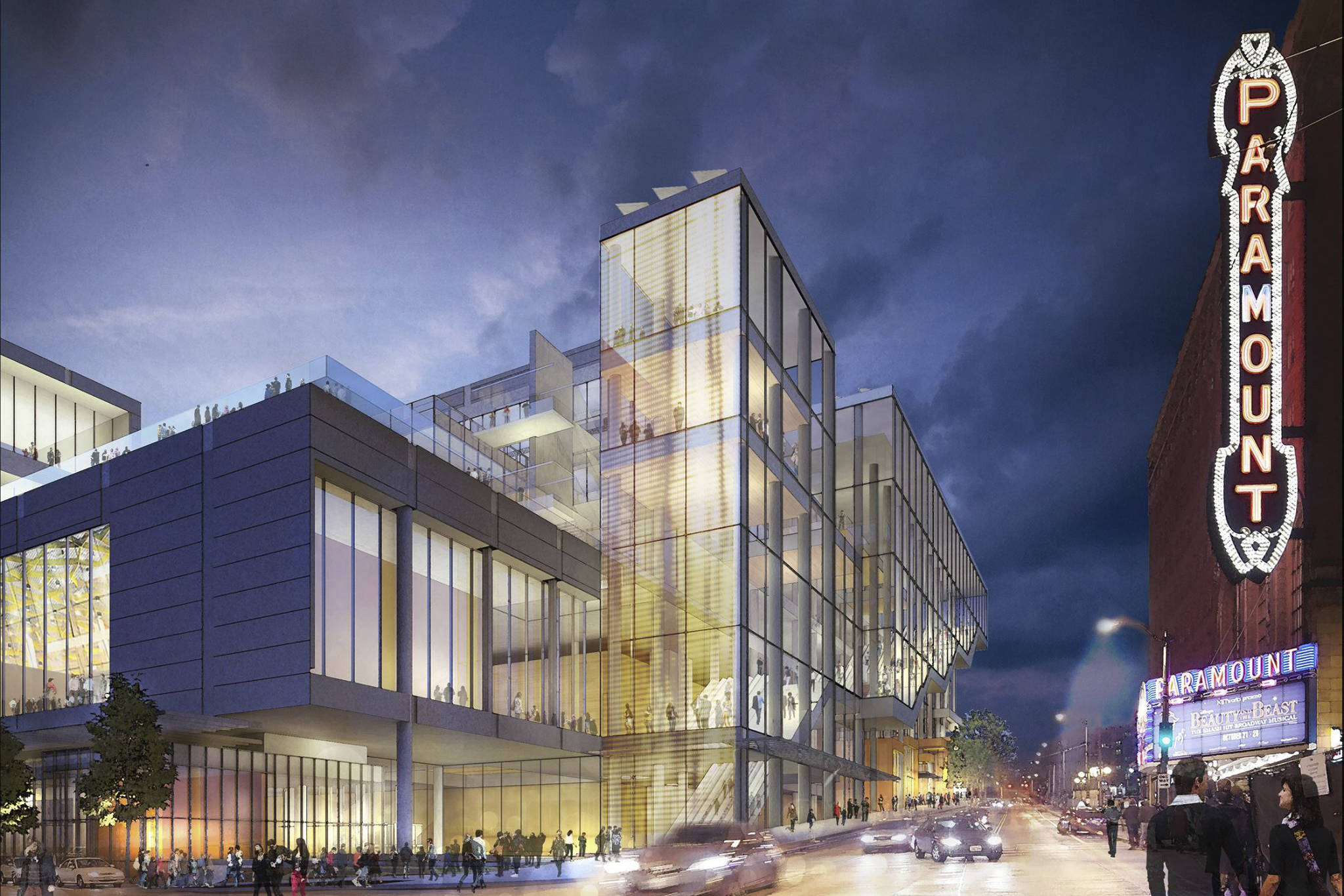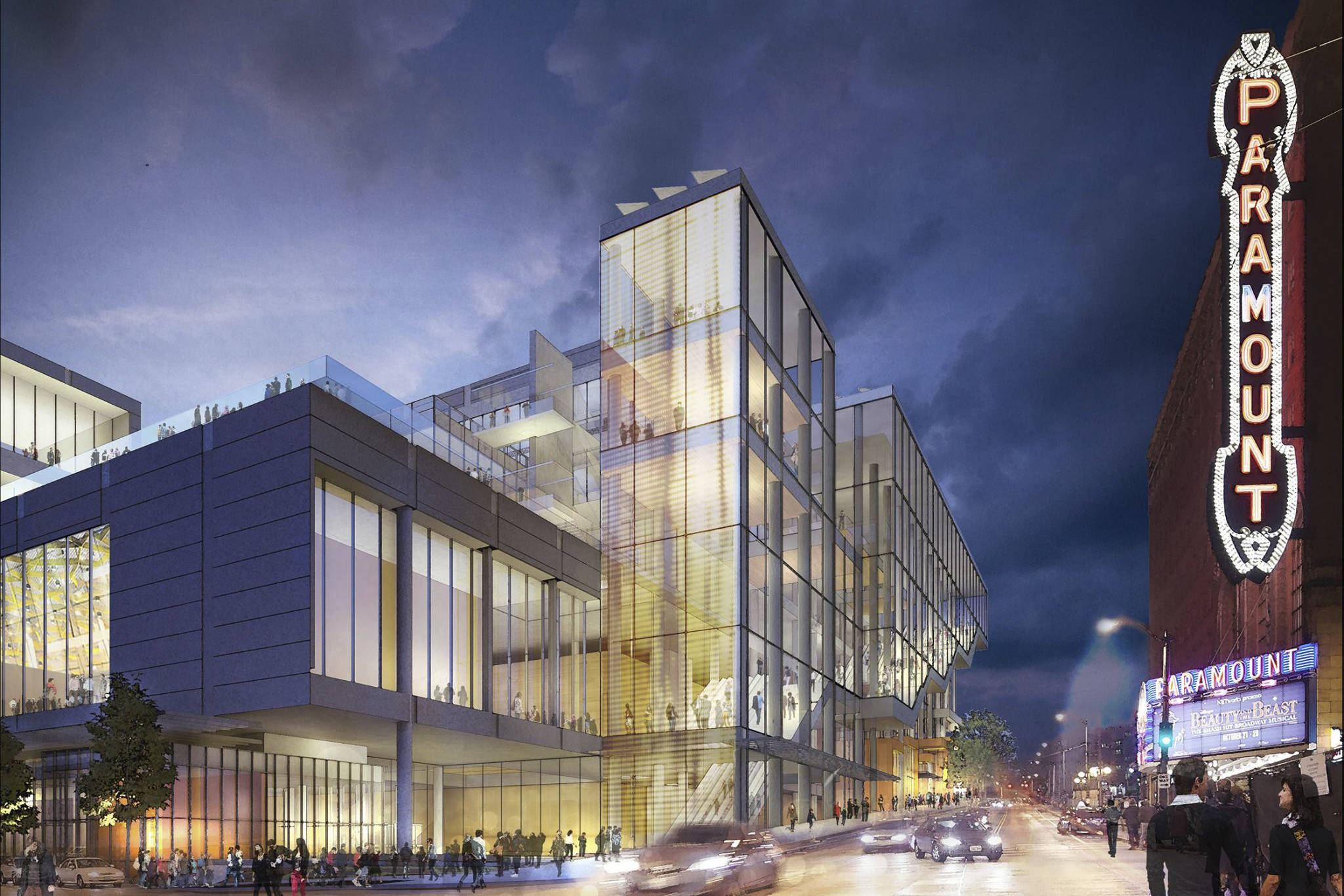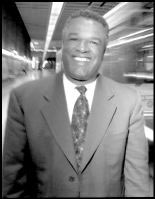The 59th session of the Washington Legislature is headed for infamy. Gov. Christine Gregoire is convening a “five-corners” meeting of bipartisan representatives of the state House and Senate and her own office Saturday, March 4. Their task is to come up with a plan to fund a major expansion of KeyArena for the Seattle SuperSonics basketball team. Many in Olympia think that some kind of Sonics plan will pass the Legislature before it adjourns Thursday, March 9.
The governor and legislative leaders will also meet over the weekend to hammer out an agreement on Puget Sound’s transportation issues, including whether the seismically vulnerable, 53-year-old Alaskan Way Viaduct in Seattle will be rebuilt above or below ground. But the Sonics arena issue, unfortunately, will overshadow that and any other substantive things the Legislature will have accomplished this session, including a solid boost for the bio-fuels industry, better unemployment benefits for seasonal workers, finally moving the state’s primary elections to August from September, and increasing funding for education, health care, and social services.
Gregoire seems destined to join the likes of other recent Democratic governors, Gary Locke and Mike Lowry, and push a hastily assembled mega-deal through the Legislature for a sports team. Recently dubbed “negotiator in chief” by Associated Press reporter Dave Ammons for her prowess at cutting deals, the governor will meet with the state Senate’s chair of ways and means, Margarita Prentice, D-Renton; the Senate’s Republican leader, Mike Hewitt, R–Walla Walla; the House’s finance chair, Jim McIntire, D-Seattle; and the House’s deputy Republican leader, Mike Armstrong, R-Olympia.
Their mission is to craft an agreement that can be brought back to the Legislature’s respective caucuses. Legislators report that Gregoire is lobbying hard. State Sen. Darlene Fairley, D–Lake Forest Park, says Gregoire spoke to her about the arena issue. “The governor is making a major push,” she says. While Fairley will not vote for a remodel of KeyArena for the Sonics, she believes enough of her colleagues will. “It will pass with conservative Ds and Republicans,” she predicts.
The elements that are expected in such a package include a sizable contribution from the Sonics, a three-year extension of current stadium taxes, and a referendum on the matter for the voters of King County or the state of Washington.
Success might prove elusive for the region’s transportation crisis (and, of course, needed education reforms will die for the umpteenth time). Also on Saturday, the governor was to meet with state House transportation chair Ed Murray, D-Seattle; Rep. Fred Jarrett, R–Mercer Island; Senate transportation chair Mary Margaret Haugen, R–Camano Island; and either Senate Republican floor leader Luke Esser, R-Bellevue, or Sen. Bill Finkbeiner, R-Kirkland. Their goal is to reach consensus on reform of the Puget Sound–area Regional Transportation Improvement District (RTID), including the fate of Seattle Mayor Greg Nickels’ wish to replace the waterfront Alaskan Way Viaduct highway with a tunnel. RTID is a mechanism to raise funds in Pierce, Snohomish, and King counties for transportation improvements, mostly to state highways like the viaduct, which is Highway 99, the Highway 520 floating bridge between Seattle and Bellevue, Interstate 405, Highway 167, and Highway 509. The state has not fully funded needed replacement or upgrading of these roads, so local voters will be asked to increase their motor vehicle excise taxes (MVET), their sales taxes, and put tolls on particular routes (the 520 bridge almost certainly).
Polls show that a roads package by itself will face a tough time at the polls, so RTID is planning to go to the ballot at the same time as Sound Transit, the three-county transit agency that operates commuter rail and express buses and is building light rail. Sound Transit plans to put a new multibillion-dollar package before voters. To succeed, RTID’s members believe they need new geographical boundaries that mirror Sound Transit’s—the parts of the three counties that are likely to vote in favor of transportation taxes—and different taxing authority, meaning more reliance on the MVET, less on sales tax. The Legislature is prepared to give RTID what it wants but is divided over what to demand in return.
Republicans want to see RTID and Sound Transit joined at the hip; both would have to pass for either set of new taxes to go into effect. Democrats would like either measure to be able to advance on its own. House Democrats are adamant that the multibillion-dollar transportation tax should appear on the 2007 ballot, since they fear a 2006 ballot measure would bring out conservative voters and hurt their legislators at the polls. Leading House Democrats, including Seattleites Helen Sommers and Mary Lou Dickerson, don’t like the idea of waiting for the mayor to come up with the extra $1 billion needed to replace the viaduct with a tunnel; they want a deadline of next Jan. 1. Ironically, Eastside Republicans like Jarrett and Finkbeiner support Nickels’ tunnel. They think it helps keep City Hall fully engaged with the RTID, because Nickels hopes to get $800 million for the tunnel from the ballot measure.
While these differences seem astonishingly minor compared to the urgency of replacing dangerous roadways, legislators say an RTID compromise might be difficult to reach. “Is it going to be easy? No, but it’s absolutely critical,” says Finkbeiner.
The Sonics and KeyArena aren’t a critical issue, so what is it about sports teams that inspires legislative action? King County’s voters have watched in horror and bewilderment as two previous legislatures arranged for nearly $1 billion in corporate welfare for first the Seattle Mariners (after voters rejected a bailout plan) and next the Seattle Seahawks. The resulting Safeco Field and Qwest Stadium are a constant reminder of voter anger. The stadiums are frequently used as excuses by right-wing populists for supporting Tim Eyman’s horrible tax-cutting measures and by left-wing populists pushing boondoggles like the Seattle Monorail Project.
The professional sports industry contributes very little to the local economy. Money spent on entertainment is discretionary. If people don’t spend their money on sporting events and the surrounding nightlife, they will spend it somewhere else locally. It’s not like people are going to stop spending the money or drive to Oregon to eat dinner. The people who own sports teams are multimillionaires or billionaires with gigantic egos who make huge profits on their investments when they sell the teams. The players are paid millions to play children’s games, and most of them act as badly as one would expect from such absurd indulgence. (None of which should be construed as meaning that I don’t enjoy playing or watching sports.)
If the Sonics leave, Seattle has great college and high-school teams to watch, and who knows, maybe we would get a nice Continental Basketball Association franchise. We would have to figure out what to do about KeyArena. Its debt from the last remodel for the Sonics is dragging down city-owned Seattle Center, but if we fixed up the Opera House, we can throw a few bucks to make KeyArena better for concerts or hockey or whatever will pay the bills. We certainly don’t need a $200 million makeover of the Key.
If legislators find a solution for the Sonics, but not for our quake-damaged, outdated transportation infrastructure, it seems pretty apparent that they are not doing their jobs.







